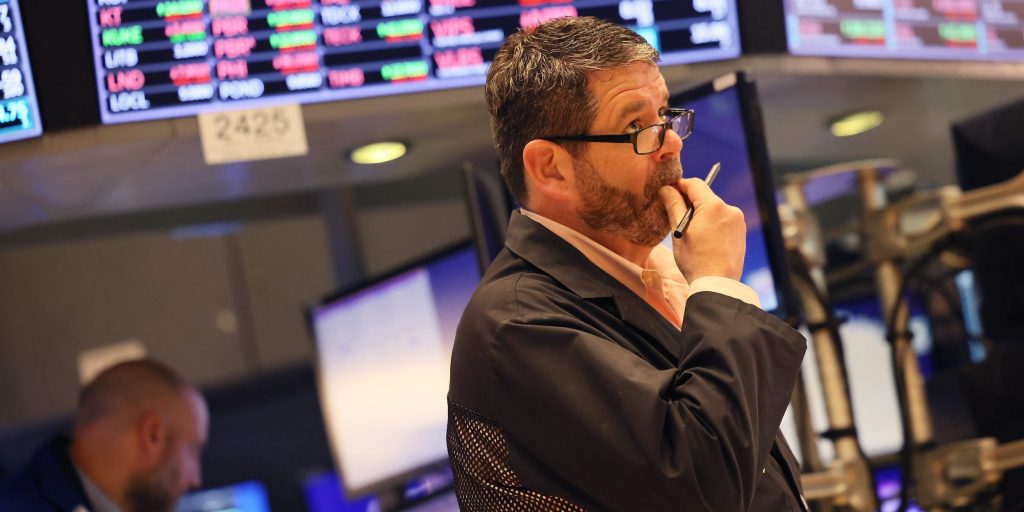- The stock market could be primed for a few "lost years" ahead, according to Susquehanna International Group.
- The Wall Street quant firm highlighted that average stock market returns have been elevated over the past decade.
- Susquehanna recommends stock market traders use options if a sideways market materializes.
Stock market investors have been conditioned for strong returns over the past decade as a prolonged period of historically low interest rates helped fuel asset prices.
But after a record rise in inflation and fast-rising interest rates, investors should be prepared for a few "lost years" in the stock market, according to Susquehanna International Group's co-head of derivatives strategy Chris Murphy.
That's because the above average returns seen in the S&P 500 since 2012 can't last forever, and they may be due to mean revert back to their longer-term average, Murphy said in a Thursday note to clients.
"If we look back 50 years, the S&P 500 has realized ~7% returns annualized," Murphy highlighted. The S&P 500 would be currently trading at 2,027 if it saw annualized gains of just 7% from 2012 through today, Murphy observed, highlighting just how big of a difference a few percentage points in annualized gains can make in terms of compound interest.
The S&P 500 currently trades just below 3,800.
"However, over the past 10 years that annualized return has been closer to 11%. Is there something different about the past 10 years, or is the longer term average telling us the next few years are likely to be a grind?" Murphy asked.
The big difference, according to Murphy, is that the average Federal Funds effective rate over the past 50 years is 4.88%, compared to an average rate of just 0.61% during the 2010s. Given the marked rise in inflation, Murphy says it's likely the average Federal Funds rate over the next decade will be somewhere in between 0.61% and 4.88%.
Today, the Federal Funds rate stands at 1.58% after Fed Chair Jerome Powell lifted interest rates by 75 basis points last week, 50 basis points in May, and 25 basis points in March.
While the S&P 500 has averaged an annualized return of 7% over the past five decades, its calendar year returns are rarely 7% on the nose and instead oscillate between both double digit gains and double digit losses. That means a couple "lost years" for the S&P 500 could look more like a back-and-forth between big losses, like the S&P 500's year-to-date decline of about 20%, and big gains, all-in creating a sideways chop.
To prepare for the potential "lost years" in the stock market, Murphy suggests traders participate in "selective overwriting and underwriting and using options to position for choppy trading," according to the note. That could include writing covered calls on underlying positions, among other options strategies.
